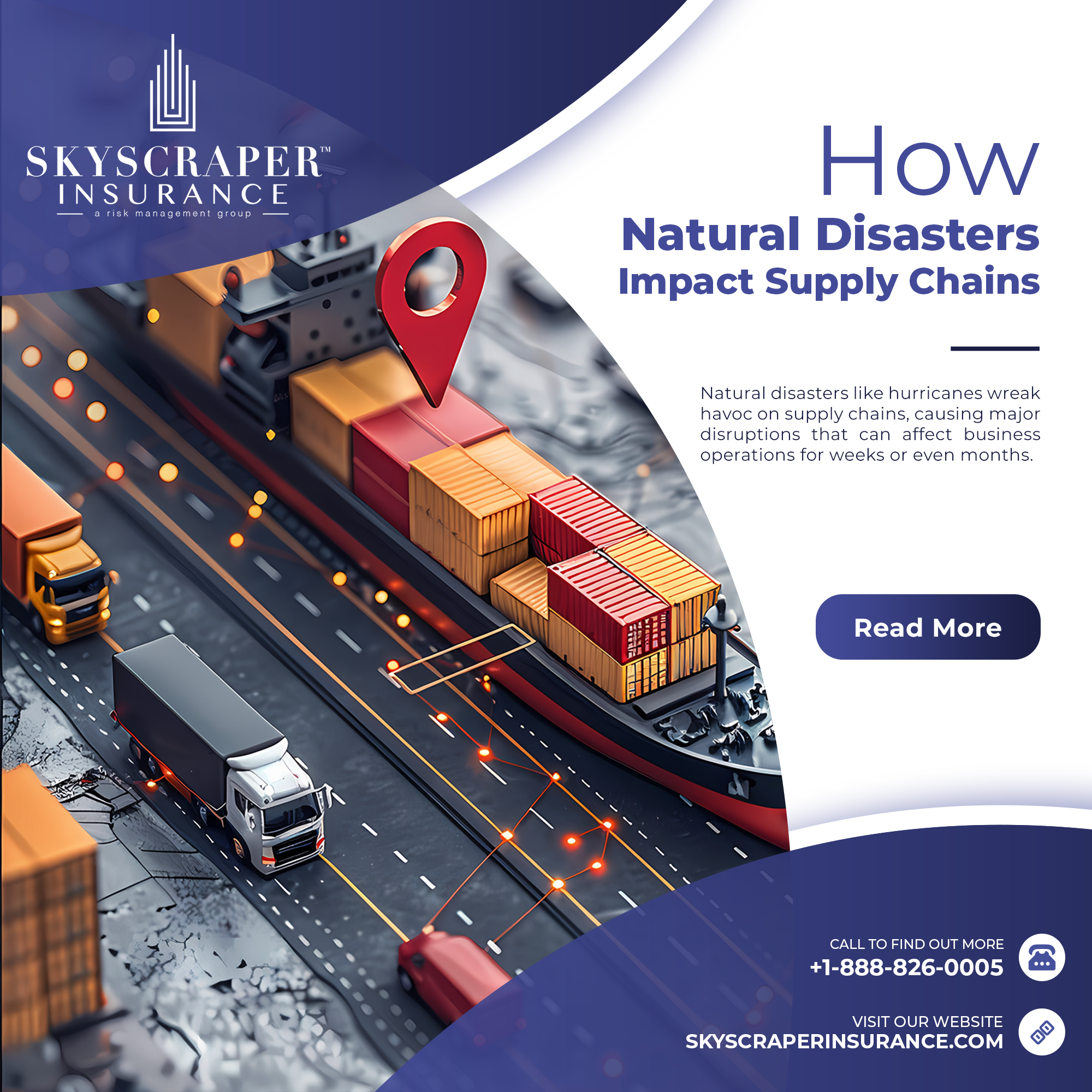Natural disasters like hurricanes wreak havoc on supply chains, causing major disruptions that can affect business operations for weeks or even months. For businesses, it’s critical to understand how these disruptions occur and to take steps to mitigate them. At Skyscraper Insurance, we help our clients navigate these challenges with smart risk management strategies that protect their bottom line. Here’s how hurricanes impact supply chains and what businesses can do to prepare.
The Impact of Hurricanes on Supply Chains
Hurricanes affect supply chains in several key ways:
- Transportation Delays: Hurricanes often damage critical infrastructure like roads, ports, and airports, making it difficult to move goods. Flooding and debris can shut down major highways, causing delays in deliveries and raising transportation costs.
- Supplier Disruption: Suppliers located in areas affected by hurricanes may face temporary closures, production halts, or damage to facilities. This disruption can lead to shortages of critical raw materials or products.
- Inventory Shortages: Businesses may experience significant inventory shortages when hurricanes hit, particularly for essential goods like food, water, and building materials. Disruptions in manufacturing or shipping mean businesses can’t restock inventory, resulting in empty shelves and unmet customer demand.
- Communication Breakdowns: Power outages and damaged communication networks can prevent coordination between suppliers, shippers, and businesses, leading to confusion and delays.
Minimizing the Impact: Strategies for Business Resilience
While hurricanes are unpredictable, businesses can minimize their impact on supply chains through proactive planning:
- Build a Strong Network of Alternative Suppliers: Relying on a single supplier can be risky. Diversify your supplier base, especially for critical products, to ensure you have backup options in case of disruption.
- Pre-Stock Essential Inventory: Before hurricane season, businesses should pre-stock essential inventory to avoid shortages when supply chains slow down. This is especially important for retailers and manufacturers who depend on a steady flow of goods.
- Invest in Technology and Data Analytics: Advanced supply chain management software can help businesses track shipments and predict potential disruptions. Data analytics can provide insights into vulnerable parts of the supply chain and suggest alternative routes or suppliers.
- Create a Disaster-Preparedness Plan: Establish a robust disaster-preparedness plan that includes alternative shipping routes, emergency contact lists, and backup systems for communication. This will ensure your business can continue to operate, even during severe weather conditions.
- Collaborate with Carriers and Logistics Partners: Work closely with your carriers and logistics providers to ensure they have their own contingency plans in place. Sharing real-time information about road closures, port statuses, and delivery schedules will help you make faster, more informed decisions.
Inventory and Distribution Strategies
Hurricanes often lead to localized supply shortages in the regions directly affected, but businesses that rely on global supply chains must also be wary of broader impacts. Global markets can feel the ripple effects as businesses look for alternative suppliers or routes, which might drive up costs and delay deliveries.
- Warehouse Location Strategy: If possible, locate distribution centers and warehouses outside hurricane-prone areas. Having diversified storage options across multiple regions will ensure that goods can still be distributed, even if a key facility is affected.
- Review Contracts with Suppliers: It’s a good practice to review and renegotiate contracts with key suppliers to ensure there are terms in place that protect your business in the event of a natural disaster. Look for clauses that allow flexibility or priority status when it comes to accessing goods during shortages.
Supporting Employees and Customers
Beyond the logistical impact, hurricanes also bring safety risks to employees and customers. Ensure that safety plans are in place, including clear evacuation procedures and communication strategies. For employees working in distribution or warehouses, it’s essential to prioritize their well-being by closing operations in unsafe conditions and providing post-storm recovery support.
Final Thoughts
Supply chains are the backbone of many businesses, but they are also vulnerable to the unpredictable forces of nature. By diversifying suppliers, investing in technology, and planning ahead, businesses can minimize the disruption caused by hurricanes and other natural disasters. At Skyscraper Insurance, we’re here to help our clients protect their supply chains and navigate the challenges posed by these extreme events.









